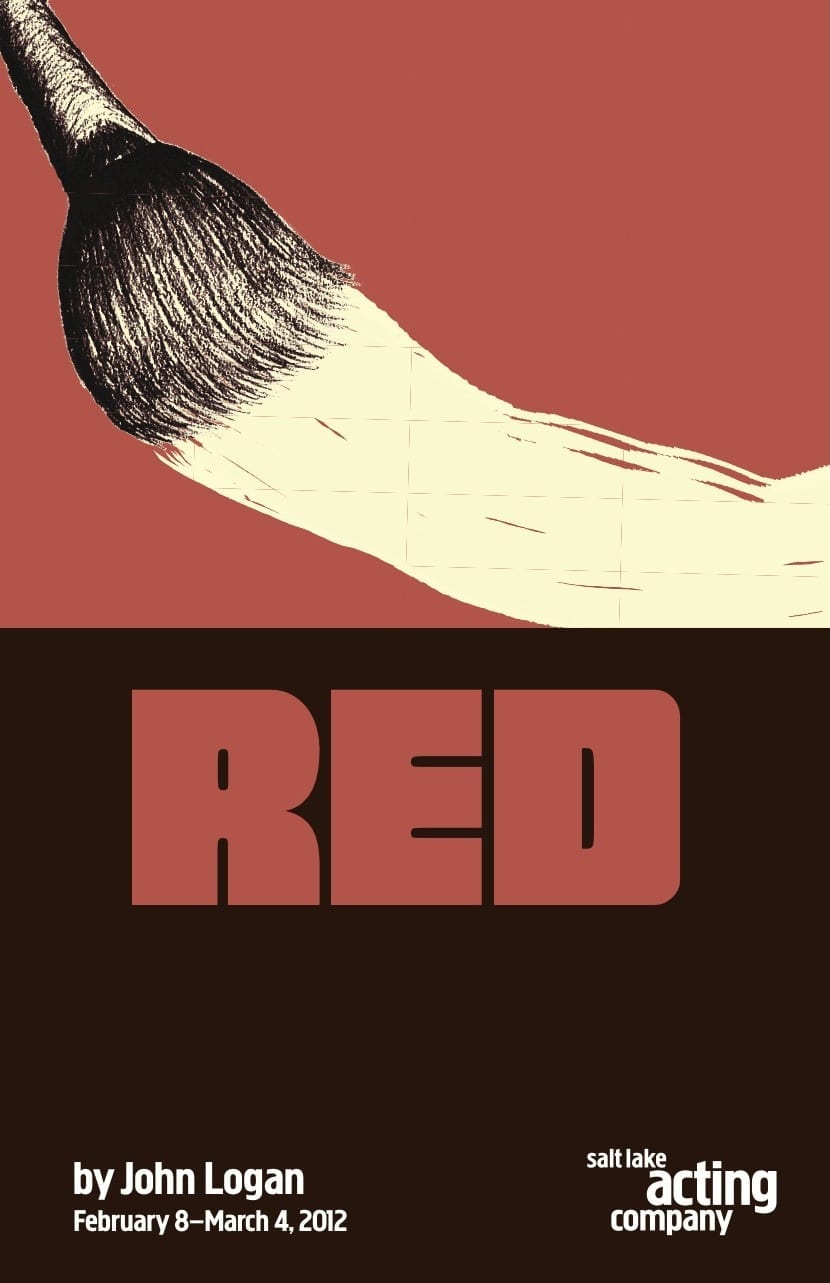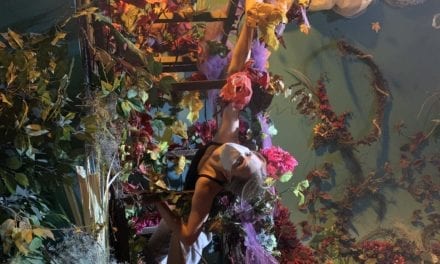 SALT LAKE CITY — As someone who enjoys all kinds of art but is “left wanting” when it comes to a good knowledge of visual art history, I was excited to see Salt Lake Acting Company’s production of Red by John Logan. I was hoping that this Tony Award winning script, coupled with SLAC’s brilliant reputation, would help me catch a glimpse of the painter’s artistic process and add another spec of knowledge to what little I know of the famous abstract expressionist painter Mark Rothko. SLAC did those things while also presenting an engaging performance that entertained as much as it challenged the audience to reconsider what it means to create, trade, and consume art.
SALT LAKE CITY — As someone who enjoys all kinds of art but is “left wanting” when it comes to a good knowledge of visual art history, I was excited to see Salt Lake Acting Company’s production of Red by John Logan. I was hoping that this Tony Award winning script, coupled with SLAC’s brilliant reputation, would help me catch a glimpse of the painter’s artistic process and add another spec of knowledge to what little I know of the famous abstract expressionist painter Mark Rothko. SLAC did those things while also presenting an engaging performance that entertained as much as it challenged the audience to reconsider what it means to create, trade, and consume art.
The play centers on Rothko’s attempt to fulfill a commission for several murals for The Four Seasons restaurant in 1958. The play is set in Rothko’s studio and follows his interactions with his (fictional) assistant Ken. Ken has been hired to help Rothko complete his commission, but also challenges Rothko’s theories on art as well as his pretentious approach to the public.
My favorite element of this production was the writing. Logan was able to craft dialogue brimming with imagery and theory while still remaining accessible. Almost every section of dialogue linguistically contained something to see, something to feel, and something to ponder. I anxiously tried to keep track of each beautifully juicy tidbit of dialogue in my mind, only to give up after 15 minutes and vow that I would purchase a copy of the script as soon as I get the chance. What Logan lacked in a couple of overused plot conventions, he made up in interesting characters whose outlooks on life are as interesting as their description of the same.
Kevin Myhre’s direction was noteworthy. Each production element came together in such a way that the signs of a good director were evident throughout. Each element was coordinated and all seemed to point back to the language. The lighting design (Jesse Portillo) was a beautiful reflection on Rothko’s obsession with the movement of his paintings. The action on stage came alive as the lighting “ebbed and flowed” right along side the dialogue. Portillo even created one of my favorite moments in the show by using florescent lighting, something rarely seen in the theatre. The semi-realistic/semi-artificial set design (also Kevin Myhre) assisted in the portrayal of the false/constructed world that Rothko creates for himself, through his theories, and for his audiences, through his art.
One aspect of Myhre’s direction that I won’t soon forget is his use of silence. While I loved the writing, the dialogue was very full and could get tiresome. Myhre, with the help of the actors, created inspiring moments of silence that were filled with action that could be appreciated just as one would appreciate a painting. I found the silent moments of the character’s daily work to be some of the most moving moments in the show.
Overall, the acting was also memorable. Morgan Lund (Rothko) crafted an interesting character that was provoking, if not likable. He gave this character, torn between nostalgia and creativity, a moving interpretation that was riddled with anger as well as heart. I felt, however, that Lund could have given the character a little more variety. At times I hoped he would go to a place other than the same anger that the audience was so used to and that, in places, seemed to be the easy choice. Lund showed so much talent that I wanted to see it exercised fully.
Ted Powell (Ken) impressed in his portrayal of the eager but damaged assistant with his use of interesting physical and emotional choices. He was able to make physical choices that were bold while staying natural. His physicality was a great balance to Lund’s commanding presence. Powell’s emotional journey was also easy to see without being overstated. I appreciated his use of control in moments of great emotion. This is a show that could have easily been over the top if every moment of intensity was coupled with the obvious markers of anger or sadness. Powell avoided those situations and brought the audience in with subtlety and exactness.
The two men worked well together. They showed good connection without creating a relationship that would be unbelievable from Rothko. Their moments of distance were as notable as their moments of closeness. I never wanted for another character to aid this full production that consisted of just two actors. They, along with their connection, were just enough.
I would recommend visual art and theatre lovers alike to go see SLAC’s production of Red.
Red is also PlayUtah.org‘s play of the month for February 2012. Register with PlayUtah.org to receive a discount for the February 26 evening performance, a reception, and a panel discussion about the production.






